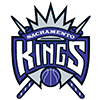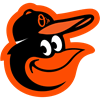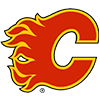The last two entries in this series respectively addressed the Detroit RBs/Washington RBs/Philadelphia WRs and Indianapolis RBs/San Francisco RBs/San Francisco WRs.
This article will look at the Kansas City running backs, Washington wide receivers (behind Terry McLaurin) and Atlanta wide receivers (behind Julio Jones and Calvin Ridley).
The next article will look at the Tampa Bay RBs, New England WRs and Las Vegas WRs
Kansas City Running Backs
Clyde Edwards-Helaire
Damien Williams
DeAndre Washington
Darwin Thompson
Darrel Williams
Clyde Edwards-Helaire was the first running back selected in the 2020 draft, taken by the Chiefs with the last pick in the first round. The resulting ADP (18.0 NFFC, 22.43 BB10) makes the assumption that Edwards-Helaire will secure the starting role over Damien Williams soon if not immediately. Damien's price is still rather high (68.86 NFFC, 63.03 BB10), so he appears to have his own share of believers despite the broader public emphatically siding with the rookie. Edwards-Helaire will almost certainly emerge as Kansas City's clear lead running back at some point by early 2021, the question is whether it will happen soon enough to warrant his current price tag.
Edwards-Helaire (5-foot-7, 207) is basically a Brian Westbrook starter kit, grading highly with all of balance, start-stop, change of direction, agility, burst and pass-catching ability. His 4.6-second 40 indicates a lack of long speed, but his standout explosiveness testing (39.5-inch vertical, 123-inch broad jump) indicates that Edwards-Helaire has the right kind of juice to consistently cut up defenses underneath. As
The last two entries in this series respectively addressed the Detroit RBs/Washington RBs/Philadelphia WRs and Indianapolis RBs/San Francisco RBs/San Francisco WRs.
This article will look at the Kansas City running backs, Washington wide receivers (behind Terry McLaurin) and Atlanta wide receivers (behind Julio Jones and Calvin Ridley).
The next article will look at the Tampa Bay RBs, New England WRs and Las Vegas WRs
Kansas City Running Backs
Clyde Edwards-Helaire
Damien Williams
DeAndre Washington
Darwin Thompson
Darrel Williams
Clyde Edwards-Helaire was the first running back selected in the 2020 draft, taken by the Chiefs with the last pick in the first round. The resulting ADP (18.0 NFFC, 22.43 BB10) makes the assumption that Edwards-Helaire will secure the starting role over Damien Williams soon if not immediately. Damien's price is still rather high (68.86 NFFC, 63.03 BB10), so he appears to have his own share of believers despite the broader public emphatically siding with the rookie. Edwards-Helaire will almost certainly emerge as Kansas City's clear lead running back at some point by early 2021, the question is whether it will happen soon enough to warrant his current price tag.
Edwards-Helaire (5-foot-7, 207) is basically a Brian Westbrook starter kit, grading highly with all of balance, start-stop, change of direction, agility, burst and pass-catching ability. His 4.6-second 40 indicates a lack of long speed, but his standout explosiveness testing (39.5-inch vertical, 123-inch broad jump) indicates that Edwards-Helaire has the right kind of juice to consistently cut up defenses underneath. As a start-stop slasher rather than a corner-bending home-run back, Edwards-Helaire's 40 time just doesn't matter much. Given that he just turned 21 in April, Edwards-Helaire probably isn't done developing physically yet, either.
The point that Edwards-Helaire is still developing could just as easily work against his favor, however, because competition like Damien and DeAndre Washington are (A) fully developed, (B) familiar with how NFL football works and (C) pretty good in their own right. Damien in particular is intimidating for any rookie back, because he's a perfect fit for the Andy Reid scheme and already has two dominant playoff runs under his belt. Not only is Damien polished in the Reid scheme and the incumbent starter, but at 5-11, 222, he's both bigger and faster than Edwards-Helaire. While fantasy owners of Edwards-Helaire need him to produce soon or immediately, if Damien is healthy then the Chiefs will feel no such pressure to extract instant returns from the rookie.
Despite the rush to marginalize Damien as a viable starter, his production with the Chiefs argues in his favor. On his last 242 carries and 95 targets with the Chiefs he's totaled 1,109 yards (4.6 YPC) and 15 touchdowns to go with 74 receptions for 558 yards and eight touchdowns (77.9 percent catch rate, 5.9 YPT). It's probably hasty to assume Edwards-Helaire can do as much or more, especially at his age disadvantage. Rather than competence, Damien's main problem is his lack of durability. He's repeatedly gotten nicked up as the Chiefs starter, and he otherwise has no history of holding up under sizable NFL workloads. Damien's durability suffered even as a backup in Miami prior to his time with the Chiefs.
Even if Damien gets hurt, though, Edwards-Helaire isn't guaranteed to run away with the backfield. Darrel Williams appears to have earned Reid's trust and admiration as well, so he is a threat to steal some snaps in that scenario. As a fullback tweener, Darrel isn't a realistic candidate to take more than a rotational role, however. DeAndre Washington is a speedy back with a polished passing down skill set, so he probably has more upside than Darrel. Washington received a cold free agency market but produced well for the Raiders last year, playing ahead of Jalen Richard while totaling 387 yards (3.6 YPC) and three touchdowns on the ground, drawing 41 targets, catching 36 for 292 yards (87.8 percent catch rate, 7.1 YPT).
Washington isn't a guarantee to make the team, but he generally appears more qualified than 2019 preseason hype darling Darwin Thompson. As players with similar traits to Edwards-Helaire, it's possible that Washington and Thompson are fighting over one final roster spot. Washington (5-8, 204) posted a 4.49-second 40 with a 34.5-inch vertical and 118-inch broad jump at the combine out of Texas Tech in 2016, while Thompson (5-8, 200) was credited with a 4.53-second 40, 39-inch vertical and 126-inch broad jump at the Utah State pro day (no combine invitation). Despite a great deal of training camp hype, Thompson looked overwhelmed as a rookie, running for 128 yards (3.5 YPC) and catching nine of 10 targets for 43 yards. According to OverTheCap.com, the Chiefs would stand to save slightly more in cap space if they cut Thompson ($620,580) than Washington ($587,500), though Thompson's sixth-round contract offers more controllable service time than Washington does on a one-year deal.
Washington Wide Receivers
Steven Sims
Kelvin Harmon
Antonio Gandy-Golden
Terry McLaurin is, of course, a beast and won't be challenged as the WR1 on this team, nor would he be on most others. Still, there may be one or even two useful fantasy options aside from McLaurin among the Washington wide receivers.
Antonio Gandy-Golden is probably the least likely of the three named candidates to emerge as the second option after McLaurin, if only because he's a rookie fourth-round pick from low-level competition (Liberty). Steven Sims (undrafted) and Kelvin Harmon (sixth round) have less prospect pedigree in comparison, but they were both great college receivers who showed promise as rookies last year. Maybe Gandy-Golden catches them at some point — he certainly has his own talent to boast of after a dominant collegiate career — but the veteran players have a head start, which might be especially true in an unprecedented offseason with no team activities to this point.
Gandy-Golden (6-4, 223) will probably specialize as an outside receiver, both because of his vertical-friendly frame and because of his explosively linear, sluggishly lateral athletic testing (4.6 40, 36-inch vertical, 127-inch broad jump vs. 11.88 agility score). If so, Harmon should prove his primary competition. Sims played almost exclusively out of the slot last year and looked good doing it, so that might leave one remaining outside rep in three-wide sets.
Harmon (6-3, 221) was thrown into the fire in the final seven weeks of last year, logging at least 44 snaps in six of those games, and he did a good job. Despite not turning 22 until Dec. 15, Harmon finished his rookie year by catching 30 receptions on 44 targets in 493 snaps, generating 365 yards (68.2 percent catch rate, 8.3 YPT). Harmon's NFL upside might be limited due to questionable athleticism (4.6 40, 32.5-inch vertical, 117-inch broad jump, 11.47 agility score), but his skill set is pretty much beyond question. Even with an age disadvantage, Harmon consistently dominated at North Carolina State. In addition to competing with AGG for the second outside wide receiver role, Harmon is a good candidate to earn the backup slot role behind Sims.
Promising as Harmon was, his target rate and per-snap air yardage (1.01, 34th percentile) hint at a limited ability to get open. Sims had no such troubles, drawing targets at a blistering rate from the slot as a rookie. Trey Quinn opened the year as Washington's starting slot receiver but tanked completely, resulting in a jarring contrast when Sims took over. Quinn drew 0.76 air yards per snap (14th percentile) and caught just 26 of 47 targets for 198 yards (55.3 percent catch rate, 4.2 YPT). Sims still struggled in terms of per-target efficiency (60.7 percent catch rate, 5.5 YPT) but proved beyond all doubt his ability to get open, drawing 56 targets on 314 snaps. Despite running at a low ADOT (7.1, 9th percentile), Sims got open so reliably his per-snap air yardage (1.26) graded at the 58th percentile.
Atlanta Slot Wide Receivers
Russell Gage
Olamide Zaccheaus
Jalen McCleskey
Chris Rowland
The Falcons never replaced slot wideout Mohamed Sanu after trading him to New England, leaving Gage as the team's by-default slot receiver in his place. Playing in his second NFL season out of LSU, Gage drew 74 targets on 527 snaps, catching 49 receptions for 446 yards and one touchdown (66.2 percent catch rate, 6.0 YPT). The target count is encouraging at a glance, but it's not good that Gage produced below the team baseline of 67.1 percent completion rate, 7.4 YPA. At 6-0, 182, Gage is skinny to the point that his 4.42-second 40 time isn't actually impressive. Although he only played wide receiver in his final three seasons at LSU, switching from defensive back prior to that, it's still worth noting that he was unproductive in college as well, catching 52.5 percent of his senior year targets at 7.1 YPT in an offense that completed 59.7 percent of its passes at 8.8 YPA.
If Gage doesn't make a third-year jump for the Falcons then his role as starting slot receiver might be re-evaluated. The good news for Gage is that the Falcons didn't draft or sign any noteworthy receivers this offseason. The bad news for Gage is that, even without spending any money or draft picks, they still stumbled into three wide receiver prospects who might threaten Gage's snaps in the slot.
The greatest threat to Gage might be Zaccheaus, a second-year player out of Virginia who went undrafted last year but probably should not have. Zaccheaus (5-8¼, 188, at pro day; 193 pounds now) is both small yet fairly well-built for his frame, giving him acceptable density-adjusted athleticism with a 4.49-second 40, 35.5-inch vertical, 125-inch broad jump and 11.19 agility score. His age-adjusted production at Virginia is what stands out the most in his prospect profile, though. After playing more like a running back his freshman year, taking 33 carries for 262 yards and a touchdown while catching 21 receptions for 216 yards and another score, Zaccheaus played receiver his sophomore year onward. He caught 229 receptions on 355 targets for 2,537 yards and 21 touchdowns (64.5 percent catch rate, 7.2 YPT) in an offense that completed 58.2 percent of its attempts at 6.5 YPA in the same span. Zaccheaus' worst-case prospect comparison is probably something like Ryan Switzer or Jeremy Gallon, but Switzer might beat Gage in a competition.
If Zaccheaus can't push for Gage's snaps then McCleskey or Rowland still might. McCleskey (5-11, 165) is skinny and probably not a great athlete, but his production stood out both at Oklahoma State and Tulane. As a true sophomore McCleskey caught 73 of 99 targets for 812 yards and seven touchdowns, outplaying now-Lions bench wideout Chris Lacy (41 catches for 489 yards and three touchdowns), who's about 1.5 years older than McCleskey. The Oklahoma State offense completed 63.4 percent of its passes at 9.1 YPA that year, which means McCleskey probably outplayed the baseline with a catch rate of 73.7 percent at 8.2 YPT. Rowland is problematically short at around 5-6 (according to the Athletic's Dane Brugler), but he's heavy enough at 180 pounds and totaled a mammoth 161 receptions for 2,164 yards and 13 touchdowns over his last 19 games. Rowland supposedly runs a 4.48 40, and he might provide the Falcons with a Jakeem Grant sort of presence.



























